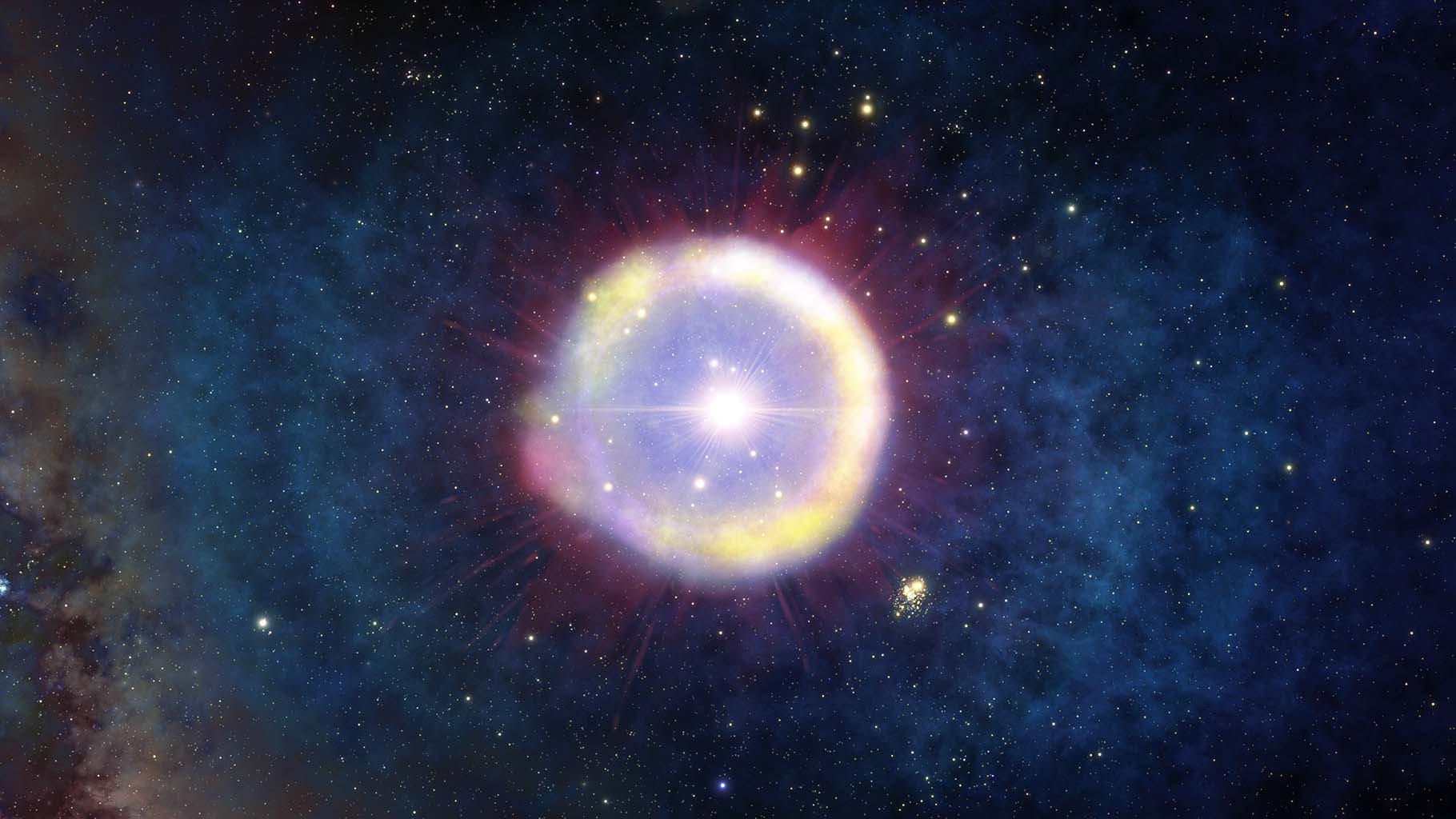NOIRLab: Potential First Traces of the Universe’s Earliest Stars

Astronomers may have discovered the ancient chemical remains of the first stars to light up the Universe. Using an innovative analysis of a distant quasar observed by the 8.1-meter Gemini North telescope on Hawai‘i, operated by NSF’s NOIRLab, the scientists found an unusual ratio of elements that, they argue, could only come from the debris produced by the all-consuming explosion of a 300-solar-mass first-generation star.
The very first stars likely formed when the Universe was only 100 million years old, less than one percent its current age. These first stars — known as Population III — were so titanically massive that when they ended their lives as supernovae they tore themselves apart, seeding interstellar space with a distinctive blend of heavy elements. Despite decades of diligent searching by astronomers, however, there has been no direct evidence of these primordial stars, until now.
By analyzing one of the most distant known quasars [1] using the Gemini North telescope, one of the two identical telescopes that make up the International Gemini Observatory, operated by NSF’s NOIRLab, astronomers now think they have identified the remnant material of the explosion of a first-generation star. Using an innovative method to deduce the chemical elements contained in the clouds surrounding the quasar, they noticed a highly unusual composition — the material contained over 10 times more iron than magnesium compared to the ratio of these elements found in our Sun.
The scientists believe that the most likely explanation for this striking feature is that the material was left behind by a first-generation star that exploded as a pair-instability supernova. These remarkably powerful versions of supernova explosions have never been witnessed, but are theorized to be the end of life for gigantic stars with masses between 150 and 250 times that of the Sun.
Pair-instability supernova explosions happen when photons in the center of a star spontaneously turn into electrons and positrons — the positively charged antimatter counterpart to the electron. This conversion reduces the radiation pressure inside the star, allowing gravity to overcome it and leading to the collapse and subsequent explosion.
Unlike other supernovae, these dramatic events leave no stellar remnants, such as a neutron star or a black hole, and instead eject all their material into their surroundings. There are only two ways to find evidence of them. The first is to catch a pair-instability supernova as it happens, which is a highly unlikely happenstance. The other way is to identify their chemical signature from the material they eject into interstellar space.
For their research, the astronomers studied results from a prior observation taken by the 8.1-meter Gemini North telescope using the Gemini Near-Infrared Spectrograph (GNIRS). A spectrograph splits the light emitted by celestial objects into its constituent wavelengths, which carry information about which elements the objects contain. Gemini is one of the few telescopes of its size with suitable equipment to perform such observations.
